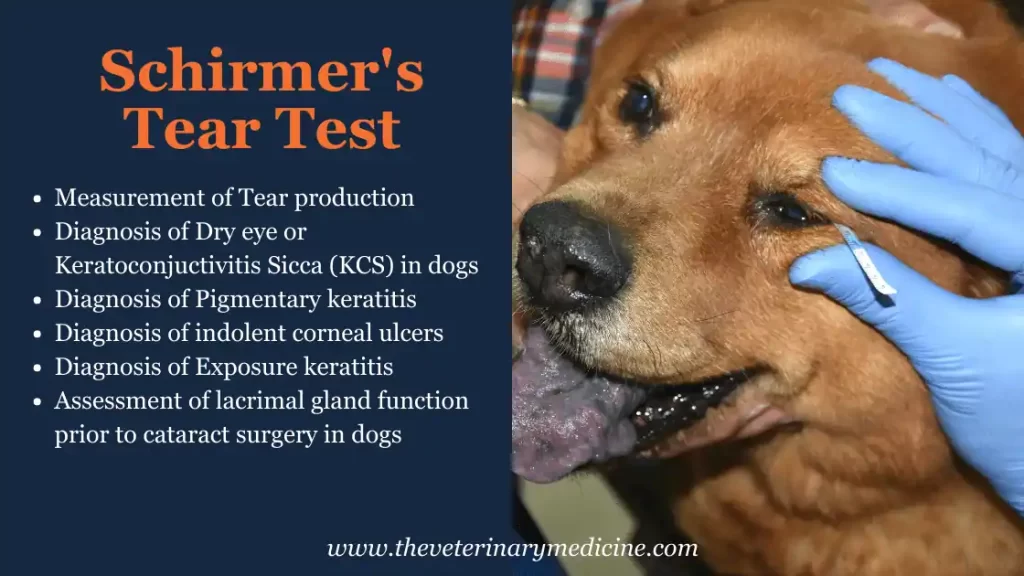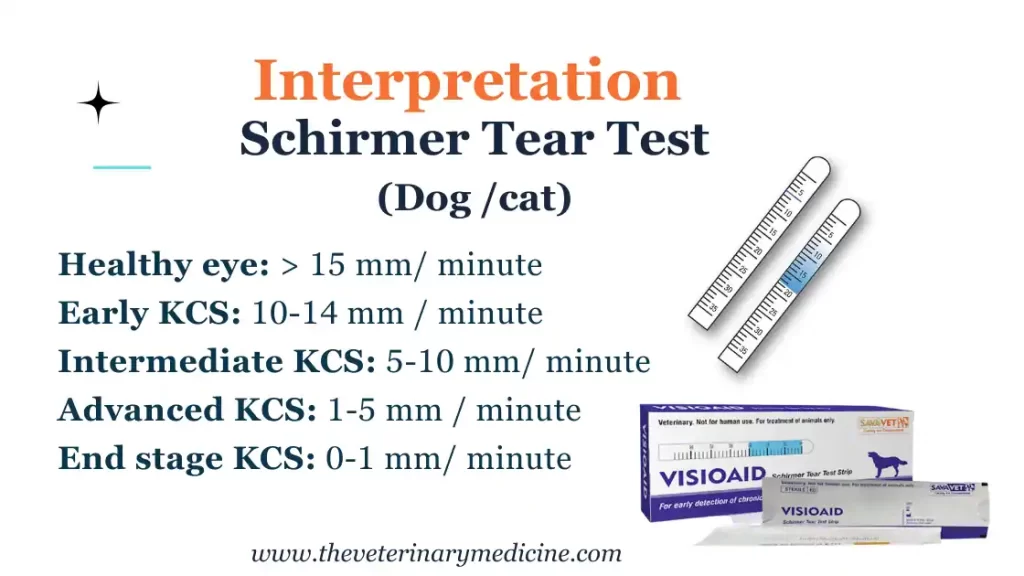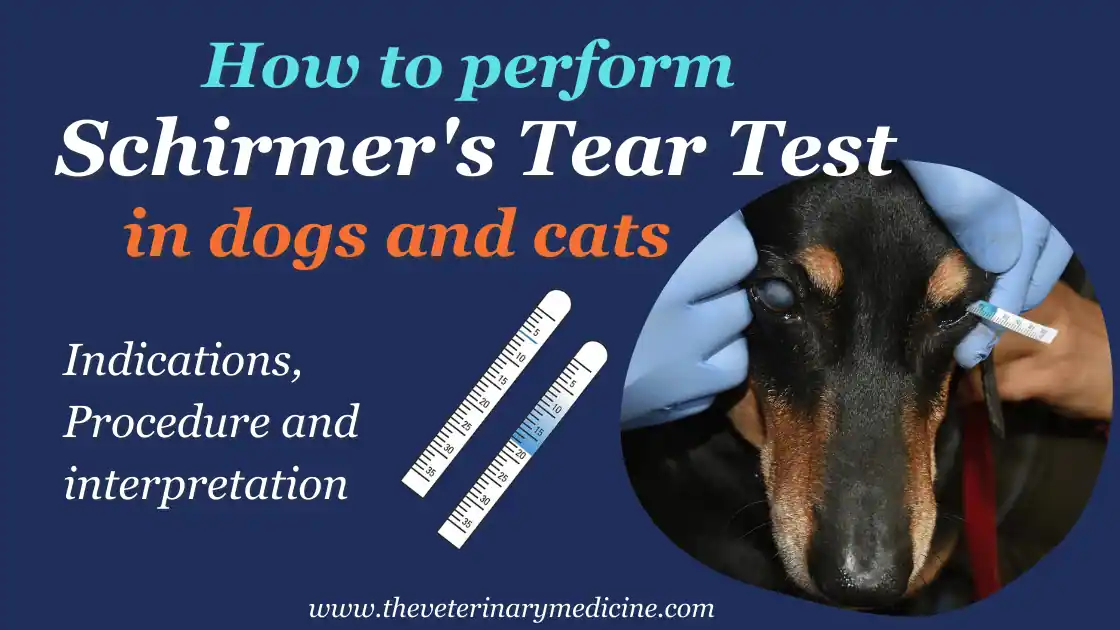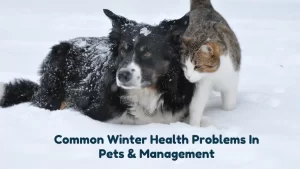Schirmer’s Tear Test in Dogs and Cats
Importance, Do's and Don'ts, Reference Values, and Early Diagnosis of KCS
Introduction:
It is very important to protect our pet’s general health and wellbeing. One important aspect of their health that often goes unnoticed is the condition of their eyes. Dogs and cats can suffer from various eye related issues like corneal melanosis, corneal ulcers, cherry eye, cataract, glaucoma, conjunctivitis including keratoconjunctivitis sicca (KCS) which is commonly known as “dry eye.” Tear deficiency in pets can also contribute to pigmentary keratitis, indolent corneal ulcers, exposure keratitis etc.
It is very important to protect our pet’s general health and wellbeing. One important aspect of their health that often goes unnoticed is the condition of their eyes. Dogs and cats can suffer from various eye related issues like corneal melanosis, corneal ulcers, cherry eye, cataract, glaucoma, conjunctivitis including keratoconjunctivitis sicca (KCS) which is commonly known as “dry eye.” Tear deficiency in pets can also contribute to pigmentary keratitis, indolent corneal ulcers, exposure keratitis etc.
There are two types of Schirmer’s tear test i.e. STT-I and STT-II. STT-I measure basal and reflex tear production while STT-II is calculated after administration of local / topical anesthetic which prevent reflex tearing and measures only basal tear production.
Importance of Schirmer's Tear Test:
Tears play a crucial role in maintaining the health of a pet’s eyes. Cornea lacks direct blood supply and tears provide necessary moisture, oxygen, and nutrients to the cornea and conjunctiva. A lack of tear production (may be qualitative or quantitative) can lead to dry, irritated eyes. If this is left untreated, may result in severe complications such as corneal ulcers, pain, and permanent loss of visual acuity. Schirmer Tear Test helps veterinarians in determining the adequacy of tear production and aids in diagnosing KCS, which is a common eye disorder in pets, especially dogs. It is also performed as a routine check before performing cataract surgeries in pets. It is also indicated in case of traumatic globe proptosis during follow up.
STT is a simple economic, non-invasive test which can be performed in pets without sedation under minimal physical restrain. It measures quantitative tear flow and test results are available immediately.

How to Perform Schirmer's Tear Test (STT) in Pets:
The Schirmer’s Tear Test involves placing a small strip of specialized dye impregnated filter paper inside the lower eyelid of the pet. This paper calculates tear production, and the amount of moisture absorbed by the paper is measured after a specific time, usually after 60 seconds. Here’s a step-by-step guide on how to perform the test:
Materials Needed:
- Schirmer tear test strips (premarked in millimeters)
- Cotton balls or gauze pads
- Sterile saline solution (optional, for moistening the eyes)
- Timer or stopwatch
Procedure:
- Prepare the pet: Ensure the pet is comfortably restrained and relaxed during the procedure. Have an assistant hold the pet gently, or use appropriate restraining equipment, if needed.
- Dry the eyes (if necessary): Use a clean cotton ball or gauze pad to gently blot any excess tears from the pet’s eyes. This step ensures an accurate reading of tear production in case of epiphora or stimulated tear production.
- Place the tear test strip: Before opening the strip bend the tip to 90 degrees at the notch or zero mark near the rounded end. Open the strip carefully. Gently open the lower eyelid of the pet and insert the bent rounded end of the tear test strip inside the conjunctival sac near lateral canthus while dog looks up. Be careful not to touch the cornea with the strip, as it may lead to irritation and tear stimulation which may lead to an inaccurate result. Hold the eyelids in position and ensure that strip is securely placed.
- Time the test: Set the timer for 60 seconds and allow the strip to stay in place. Try to keep the pet as still and calm as possible during this time to ensure correct measurement.
- Measure the result: After 60 seconds, carefully remove the strip from the pet’s eye and note the amount of moisture (in millimeters) that has been absorbed by the tear test strip. Dye will mark the progression of tear flow on the strip and makes easy to read it.
Do's and Don'ts of Schirmer's Tear Test:
To ensure accurate and reliable results keep the following do’s and don’ts in mind while performing the Schirmer’s Tear Test:
Do’s:
- Use sterile tear test strips for each eye and pet to prevent cross-contamination.
- Perform the test first in healthy or normal eye first if only one eye is affected.
- Keep the dog’s eye away from direct light, adequately resting the head.
- If any thick mucus is present on cornea or conjunctiva then remove it gently with cotton ball in order to avoid interference with tear flow due to mucus.
- Prioritize the comfort and safety of the pet throughout the procedure.
- Communicate clearly with the pet owner about the purpose and process of the test.
- Record the findings and discuss the results with the pet owner.
Don’ts:
- Don’t use in case of ocular surface damage, corneal ulcers, ocular perforations, conjunctival injury, avoid touching the cornea with the tear test strip to prevent irritation.
- Do not rush the procedure, as stress may affect tear production.
- Refrain from performing the test on pets with active eye infections or severe ocular trauma.
- Do not use any topical medication or manipulation before performing the test.
- Do prior to administration of topical anaesthetics.
Reference Values and Interpretation of STT:
- The normal reference values for Schirmer’s Tear Test can vary depending on the species and breed of the pet. As a general guideline, dogs typically have tear production ranging from 15 to 25 mm per minute. Cats, usually have higher tear production, ranging from 20 to 30 mm per minute. STT values should be evaluated carefully in cats as short-term alteration due to stress or autonomic control can lead to false values. Values below the normal range may indicate insufficient tear production, suggesting the possibility of KCS or other tear-related issues.
- Strips can be kept for result comparison before and after therapy to evaluate the need of change of medication.
- Healthy eye: > 15 mm/ minute
- Borderline or Early KCS: 10-14 mm / minute
- Intermediate KCS (possible shortage of tears): 5-10 mm/ minute
- Advanced KCS: 1-5 mm / minute
- End stage KCS: 0-1 mm/ minute
* For STT-II value more than 10 mm/min is considered normal in dogs.
Click Here To Read More About Diagnosis and Treatment of KCS/ Dry Eye
STT values more than 30 mm/ min are indicative of ocular discomfort leading to epiphora which may be due to periocular affections like distichiasis, tristichiasis, entropion, ectropion or corneal surface defects like ulcers.

Limitations of STT:
Schirmer’s tear test only measures the middle or aqueous layer of the tear so deficiency of mucin (inner) or lipid (outer) layer cannot be ruled out. Tear production may not reach up to reference levels in puppies of 9-10 weeks of age.
The Role of Schirmer's Tear Test in Early Diagnosis of KCS:
Keratoconjunctivitis Sicca (KCS) is a chronic condition where the eyes do not produce enough tears to keep the cornea adequately lubricated. The Schirmer’s Tear Test plays a pivotal role in the early diagnosis of KCS. Early detection of KCS is crucial as it allows veterinarians to initiate appropriate treatment promptly. Treatment may include artificial tear supplementation, medications to stimulate tear production, and addressing any underlying causes.
Conclusion:
Schirmer’s Tear Test is a simple, non-invasive procedure that provides valuable insights into a pet’s tear production and helps in the early diagnosis of KCS and other tear-related issues. Regular eye examinations and timely intervention can make a significant difference in preserving the vision and comfort of our beloved companions, ensuring they lead happy and healthy lives.
Reference:
Gelatt, K. N. (Ed.). (2013). Veterinary Ophthalmology (5th ed.). Wiley-Blackwell.





